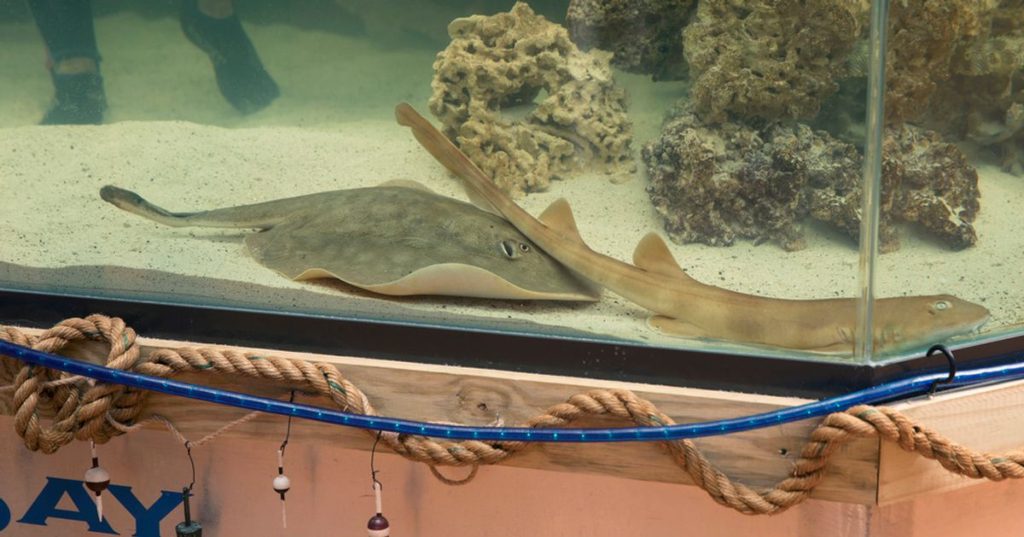The Aquarium and Shark Lab in Hendersonville, North Carolina initially announced that a stingray named Charlotte was pregnant despite not having been in the presence of a male stingray for at least eight years. They speculated that Charlotte’s pregnancy was a result of parthenogenesis, a type of asexual reproduction. However, a recent statement from the aquarium revealed that Charlotte has a rare reproductive disease that has affected her reproductive system. The aquarium did not disclose the specific disease or the current status of Charlotte’s pregnancy, but emphasized their focus on her health and well-being.
The discovery of Charlotte’s reproductive disease came as a sad and unexpected turn of events for the aquarium. The staff had been preparing for Charlotte to give birth to as many as four pups within two weeks, leading to excitement and anticipation at the prospect of witnessing a rare natural phenomenon. Parthenogenesis, the method by which Charlotte was believed to have conceived, occurs in various species such as insects, fish, amphibians, birds, and reptiles, but not in mammals. Some documented examples of parthenogenesis include California condors, Komodo dragons, and yellow-bellied water snakes.
The specific details of Charlotte’s condition and the implications for her future are unclear at this time. The Aquarium and Shark Lab did not provide additional information in response to inquiries seeking clarification on the situation. Despite the unexpected outcome, the aquarium reaffirmed their commitment to prioritizing Charlotte’s health and well-being above all else. The staff will likely continue to monitor Charlotte closely and provide appropriate care based on her individual needs as she navigates this unique reproductive challenge.
The revelation of Charlotte’s rare reproductive disease serves as a reminder of the complexities and uncertainties that can arise in the natural world. While scientists and researchers strive to understand and document various reproductive processes, unexpected developments can still occur that challenge existing knowledge and assumptions. Charlotte’s case underscores the importance of continued research and observation in the field of marine biology, as well as the need for flexibility and adaptability in responding to unexpected events in animal care and conservation efforts.
The story of Charlotte and her unexpected diagnosis has garnered attention and generated interest among the public and scientific community. The unique circumstances of Charlotte’s pregnancy and subsequent health issues have sparked discussions about the various factors that can impact reproductive health in aquatic species. As information continues to emerge and evolve regarding Charlotte’s situation, it is likely that further insights and lessons will be gleaned from this rare and intriguing case study.
In conclusion, the news of Charlotte’s rare reproductive disease at the Aquarium and Shark Lab in Hendersonville sheds light on the complexities of nature and the intricate dynamics of marine biology. While the initial anticipation of Charlotte’s pregnancy was met with excitement, the subsequent discovery of her medical condition has presented challenges and uncertainties for the aquarium staff. As they navigate this unexpected turn of events, their focus remains on providing the best possible care for Charlotte and supporting her through this difficult time. Ultimately, Charlotte’s story serves as a poignant reminder of the resilience of marine life and the ongoing quest to understand and protect the diverse species that inhabit our oceans.


